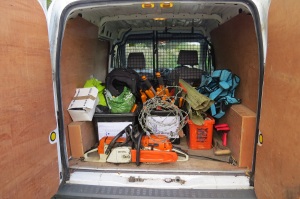It’s September: time to think about helping your garden’s wildlife through the rigours of the coming winter. This is the first in a series of posts that we hope might help.
Make a bug hotel
Early autumn is the best time to make a bug hotel, somewhere for insects to hibernate safely through the winter, which then becomes a place to rear the next generation in the spring.
You don’t have to get out the tool box, insects won’t appreciate dramatic design and carpentry though your neighbours might. In fact, the ideal insect home would probably be an old woodpile leaning against a dry stone wall or a stack of flower pots and seed trays outside your garden shed.


Chose a partially shaded and sheltered spot in your garden and build the bones of your bug hotel: a pallet cut into several pieces and piled up, or boards propped onto bricks to make shelves. There are no rules about filling the shelves and spaces but here are a few ideas.
Look for dead wood to attract wood-boring beetles; rotting wood and bark for centipedes and woodlice; hollow stems, canes, and holes drilled into blocks of wood for hibernating bees and wasps; stone and tiles near the ground will make dark, moist refuges for toads and frogs; hay and straw; dry leaves; corrugated cardboard rolled up and pushed into an empty tin can ; bunches of seed heads from your garden. A roof will help: tiles or tin, a scrap of abandoned carpet or lino. Be creative.




In the reserve we leave dead trees standing as winter habitat for invertebrates, and the hollow stems of hogweed, hemlock and willow herb, their flowering season over, for overwintering insect larvae, earwigs and beetles. We build dead hedges and woodpiles for voles and mice, fungi and lichens. Old birds’ nests, deep leaf litter, abandoned squirrel dreys and wasps nests are all colonised by invertebrates looking for somewhere to spend the winter.
There are half a million hectares of private garden in the UK. Let’s try and make that into millions of tiny nature reserves to share with our winter wildlife.





